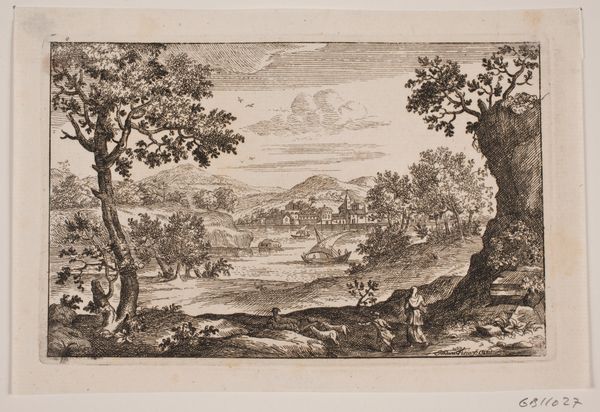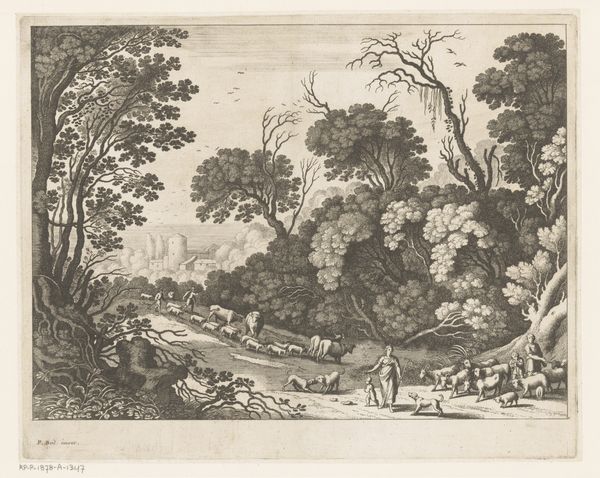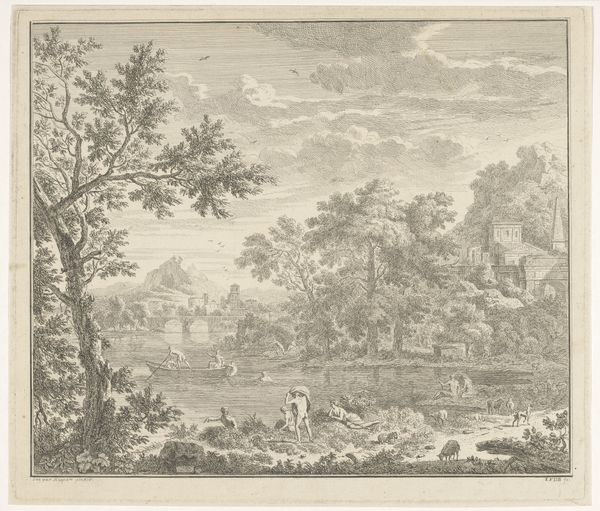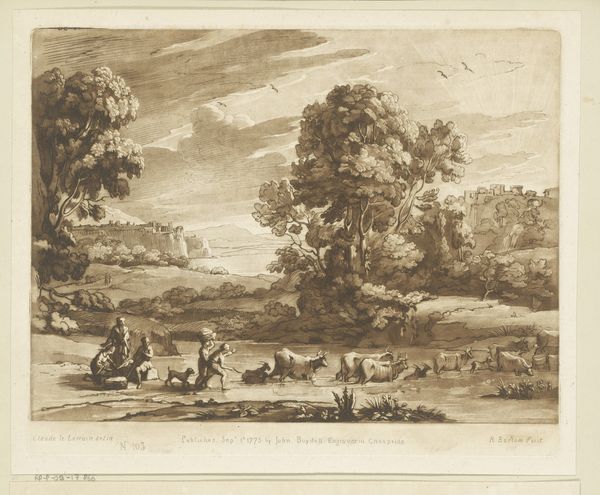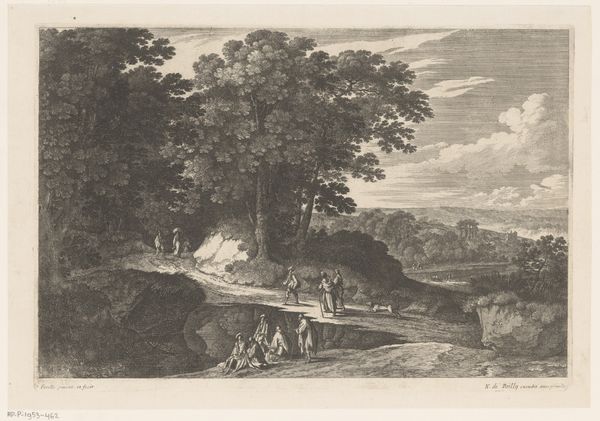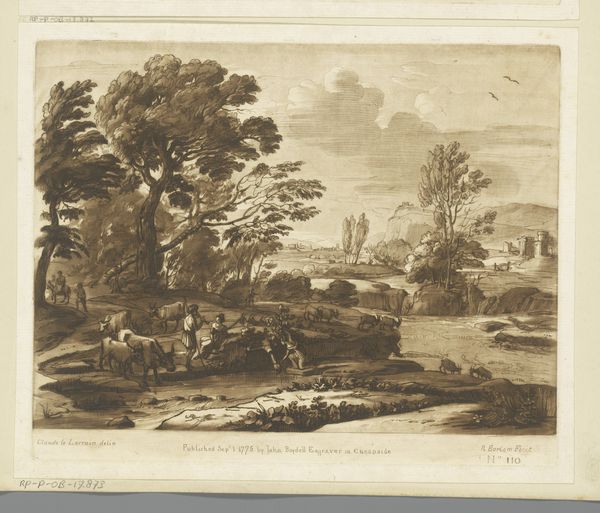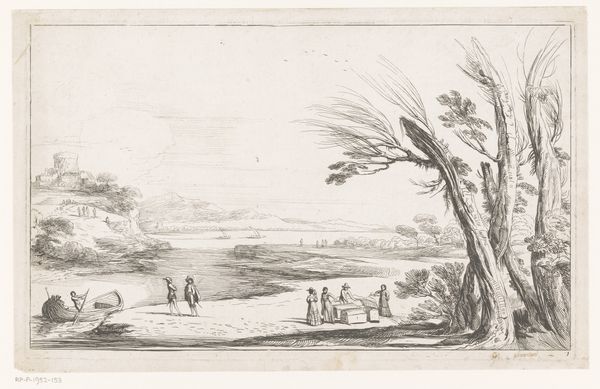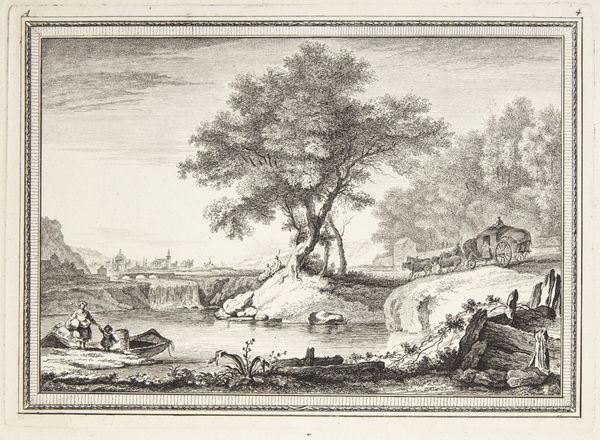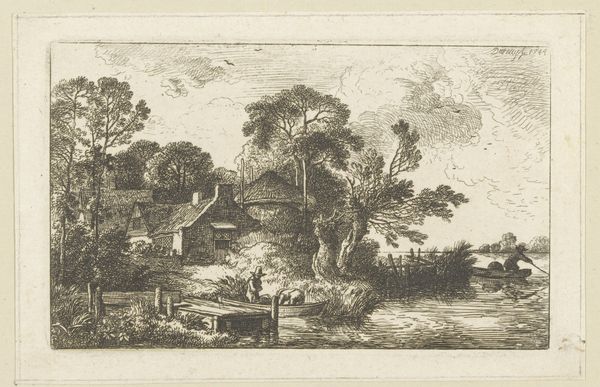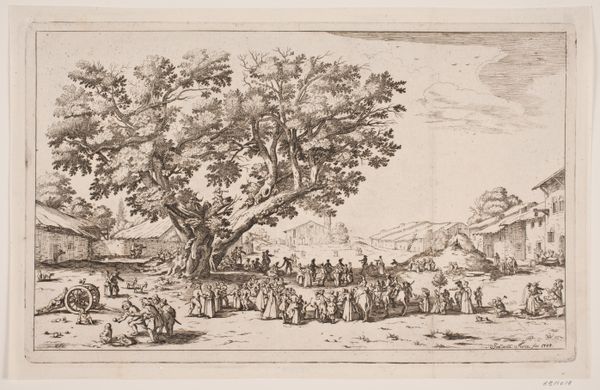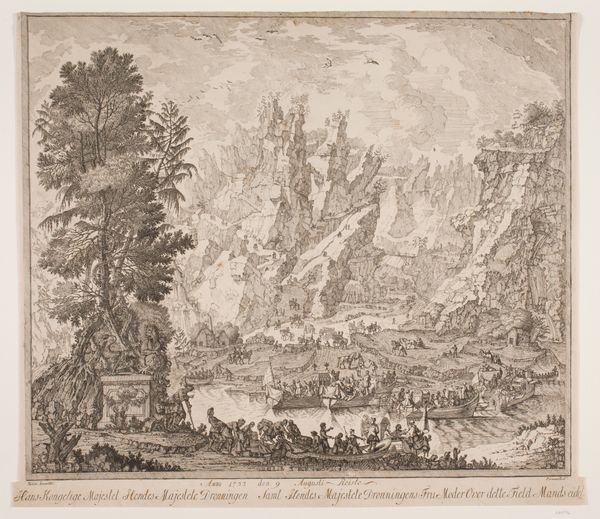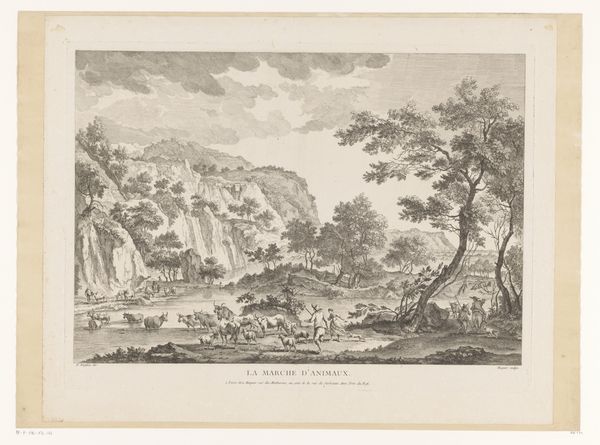
print, etching, engraving
#
baroque
# print
#
etching
#
landscape
#
etching
#
genre-painting
#
history-painting
#
engraving
Dimensions: 200 mm (height) x 312 mm (width) (plademaal)
Editor: This etching, "Et færgested i en bjergegn," which translates to "A Ferry Place in a Mountain Region," was created in 1744 by Frederik Laub. The level of detail is incredible; it reminds me of a meticulously crafted stage set. What historical or social narratives do you see embedded in this scene? Curator: The etching provides a fascinating window into 18th-century societal values and the portrayal of landscape. How does the artist's choice to depict this specific type of scene – a ferry crossing in a mountainous region – reflect the broader artistic trends of the time? Editor: I’m thinking the very presence of a ferry hints at increased trade and movement, and landscape scenes were gaining popularity. Was Laub commenting on urbanization or idealizing nature, perhaps? Curator: Precisely! There’s a tension. Consider the placement of figures within the landscape; are they dominating or dwarfed by nature? The degree to which landscape moved away from being simply background to the key element in painting happened during this time period. This reveals contemporary views on the relationship between humanity and nature, influenced by intellectual and philosophical currents of the era, such as the Enlightenment's emphasis on observation and scientific exploration of the natural world. Editor: That makes me wonder about patronage. Were prints like these for the elite who wanted to imagine journeys? Curator: It is likely images like this circulated among a growing middle class interested in depictions of travel and perhaps the possibility of a Grand Tour-like experience, accessible to a broader audience through printmaking. Editor: So, in a way, Laub wasn’t just depicting a place, but feeding a desire. Curator: Exactly. It highlights how art doesn’t exist in a vacuum. Considering the etching's purpose expands our understanding. Thanks for pointing that out.
Comments
No comments
Be the first to comment and join the conversation on the ultimate creative platform.
